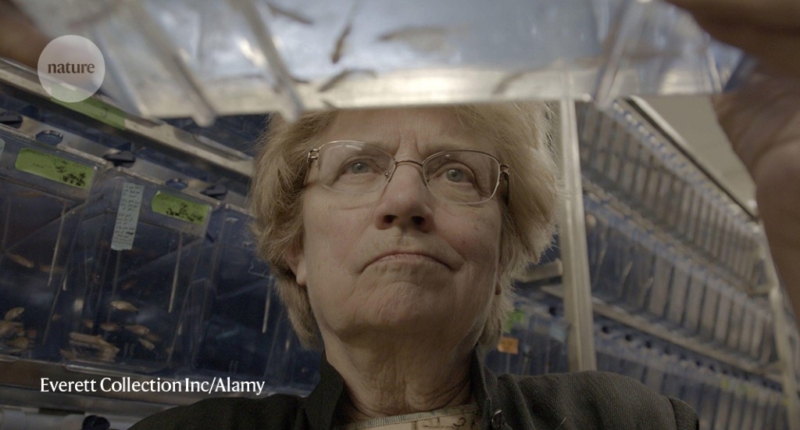Journalist Kate Zernike’s book, The Exceptions, tells the story of Nancy Hopkins, a molecular biologist at MIT who exposed gender discrimination in academia. Hopkins’s story serves as a reminder that discrimination against women in science still exists today and that there is still work to be done to advance equality for women in academia. While the book provides historical context that enriches its narrative, it does not address gender discrimination at other institutions or include context from academia outside the United States. A recent study by the Scripps Institution of Oceanography in San Diego, California, found that its female scientists have, on average, just half as much research space allotted to them as their male counterparts. Thirty years after Hopkins’s measurements, discrimination in academia remains a prevalent issue.
How Nancy Hopkins Used a Tape Measure to Expose Sexism in Science
Nancy Hopkins, a molecular biologist at the Massachusetts Institute of Technology (MIT), is known not only for her scientific contributions in cancer biology and zebrafish genetics, but also for her role in drawing attention to discrimination against women in science. In her book, The Exceptions, journalist Kate Zernike chronicles Hopkins’s journey from a young student who believed in academia’s meritocracy to a seasoned faculty member who discovered the opposite.
In 1993, Hopkins was angered by the fact that her male colleagues were routinely given more laboratory space than their female counterparts. She took matters into her own hands and measured the dimensions of each lab, office, and equipment room in her building. Her findings led to a groundbreaking report from MIT in 1999, in which the university admitted to having discriminated against female members of its science faculty for decades. This report sparked a nationwide conversation about how institutions of higher education systematically held back women in science.
Hopkins’s story is not just about her personal experience, but also sheds light on the history of gender discrimination in US higher education. Zernike’s book focuses on the exceptional women who pushed through discrimination in science to have accomplished careers, as Hopkins did. The title, The Exceptions, refers to these women who succeeded despite the obstacles they faced.
MIT, located in Cambridge, Massachusetts, is known as a place where proficiency in engineering and science levels the playing field of privilege, making it an unlikely place for this reckoning to unfold. However, MIT’s first female student graduated in 1873, a century before Harvard fully admitted women. Despite this history, discrimination against women in science remained a prevalent issue.
Hopkins’s story serves as a reminder that discrimination in academia still exists today, not only against women but also against other marginalized groups. Her bravery in using a tape measure to quantify the differences in laboratory space granted to men and women sparked a conversation that led to positive change in academia.
The Uphill Battle of Women at MIT: Nancy Hopkins’s Story
Women who enrolled at the Massachusetts Institute of Technology (MIT) faced discrimination, harassment, and assault. Campus housing was nonexistent for women until the 1960s, and the women’s dormitory was still insufficient. As late as 1985, pornographic films were shown in large auditoriums as a start-of-semester tradition.
Nancy Hopkins, a molecular biologist at MIT, was only the second woman on the faculty in the biology department when she arrived in 1973. Despite already making significant contributions to the field of cell and cancer biology, she faced discrimination and harassment. She was often told that working in science would mean taking a job from a more deserving man and that undergraduates would not trust scientific information from a woman. Her previously unpublished notes from this time reveal a searing picture of injustice.
Hopkins and 15 other women on the MIT science faculty joined forces to bring the discrimination to light. They produced the 1999 report on the status of women at MIT, which revealed that discrimination had persisted across generations of female faculty members. Hopkins’s infamous tape measurement was the tipping point that led to the report’s production. The report sparked a national conversation about how institutions of higher education hold back women in science.
Zernike’s book, The Exceptions, tells Hopkins’s story and places the MIT experience in the history of US higher education. Zernike illuminates how universities struggled to cope with the feminist revolution of the 1960s and the Title IX law of 1972 that banned discrimination on the basis of sex in federally funded institutions.
Hopkins’s story serves as a reminder that discrimination against women in science still exists today, even in supposedly progressive institutions like MIT. It also highlights the importance of using evidence to advance equality for women. By measuring the differences in laboratory space granted to men and women, Hopkins was able to provide concrete evidence of discrimination, which led to positive change in academia.
Nancy Hopkins’s Story: A Reminder that Discrimination in Academia Still Exists
Journalist Kate Zernike’s book, The Exceptions, tells the story of Nancy Hopkins, a molecular biologist at MIT who exposed gender discrimination in academia. While the book provides historical context that enriches its narrative, it does not address gender discrimination at other institutions or include context from academia outside the United States.
Thirty years after Hopkins’s measurements, discrimination in academia remains a prevalent issue. A recent study by the Scripps Institution of Oceanography in San Diego, California, found that its female scientists have, on average, just half as much research space allotted to them as their male counterparts. Hopkins’s story serves as a reminder that discrimination against women in science still exists today and that there is still work to be done to advance equality for women in academia.
Don’t miss interesting posts on Famousbio








